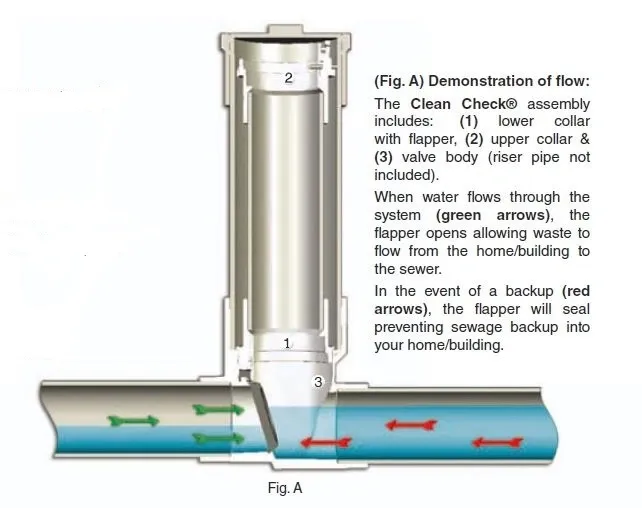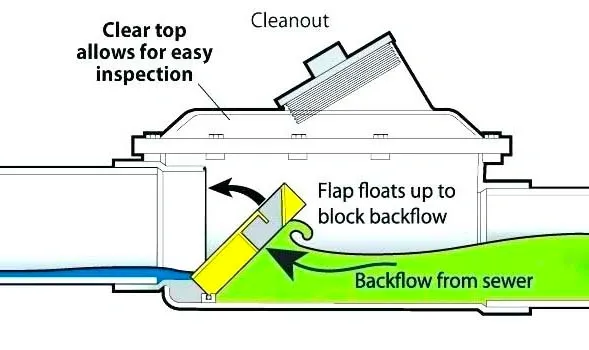Sewer Backwater Valve

Sewer Backwater Valve Q&A
A1: A backwater valve is a back flow prevention device that is designed to allow water or sewage to flow in only one direction, out of your house. In the event there is some kind of blockage in the city sewer line or the city sewer lines are overwhelmed by heavy rainfall or runoff from snow melt (causing a sewer system backup) the best way to protect your home is with a sewer backwater valve. A properly maintained backwater valve will not allow sewage from the city sewer to flow back to your house.
A2: There are a couple different kinds of backwater valves. 1.) Normally open backwater valves- this valve has a hinged flapper that rests on the bottom of the valve in the normally open position. It floats up and closes only when a reverse flow occurs. Some of these types of valves have a clear plastic cover to allow visual inspection.(Like the illustration below) 2.) Normally closed backwater valves- these valves start in the closed position and wastewater from your home pushes the hinged gate open, allowing flow through the valve. If a reverse flow occurs the gate is already in the normally closed position, stopping the reverse flow from entering your home. Since these valves are normally closed they may also help with odor (caused from a low flowing city main line that becomes septic) from entering your home. (Like the illustration to your right)
A3: The most general location for a backwater valve to be installed is where the sewer line enters the household or building. Usually at the front of the building where your sewer lateral enters the foundation wall. Backwater valves can be effective when installed anywhere on the sewer lateral in between the home and the city sewer line. Doing so ensures all fixtures in a basement or a single level home are protected from back flow.
A4: Plumbing code require backwater valves when a fixture is installed on a floor that is below the next upstream manhole. The obvious example is a basement floor drain. Even if you do not have a basement, the first floor of your home could still be vulnerable to a back flow scenario. If there is a clog in the city sewer line downstream of your home, it is going to back flow up the line to the next upstream manhole. If the next upstream manhole is higher in elevation than your first floor or lowest fixture, you will have sewage back flowing into your home. Your local municipality staff can help you determine whether or not the upstream manhole from your home is above your lowest fixtures and if a backwater valve is necessary.
A5: The property owner is responsible for having a backwater valve installed
(By themselves or a licensed contractor) and for maintaining the valve.








